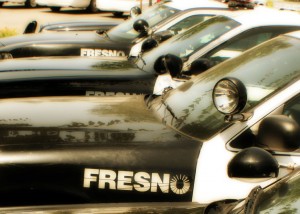
Police departments nationwide are turning to public safety technology to do their jobs even better
We are in a new era of law enforcement. Everything is continually changing as technology advances revolutionize almost every process.
Law enforcement agencies are under increasing pressure to produce quick and efficient responses to crime, public risks, investigations and suspicious events. There is no latitude for errors, slowness or communication glitches.
Twenty years ago, the New York Police Department initiated a computer program that tracked past crimes to certain regions using geographic information systems (GIS) software. That was leading edge public safety technology. Now, however, computerized crime analysis has rendered that outdated.
High-speed computers now analyze huge amounts of data in a matter of minutes. Software programs forecast, analyze, predict, identify and compare. Fingerprints can be taken anywhere and transferred in seconds. Cameras and drones are responsible for surveillance. Artificial intelligence can be used in a myriad of ways and predictive analysis is being tested as a way to prevent crimes.
Police departments in many states now use body cameras. Others are in discussions about their use. As the clamor for cameras increases, few understand the ramifications. The city of Calistoga, Calif., purchased body cameras in 2014 (not an inexpensive initiative) and now secures and maintains more than 3,300 video files of police interactions with the public. The costs of secure networks, transparency issues and oversight responsibilities have all increased.
The Albuquerque Police Department began using facial recognition technology as an investigative tool in 2015. This particular type of technology and its capabilities can only be categorized as mind-boggling. Cameras with facial recognition software can be used anywhere, and when an individual is scanned, the software is able to very accurately pinpoint the race, gender, weight and height of that person. If the person happens to be on a “watch list,” a report can be generated immediately. Additionally, the technology is capable of matching the image of a suspect against a mugshot database of 250,000 records in a matter of minutes.
Fingerprinting has now become quick, low-cost and efficient. In 2011, the state of Georgia received 120 mobile fingerprint scanners that were about the size of a smartphone. The devices were distributed to dozens of Atlanta-area law enforcement agencies. Known as mobile biometric fingerprint identification units, they were purchased with a federal grant of $1.2 million that was awarded to add 57 agencies statewide. Fingerprinting technology is used to confirm identities, and it can also alert law officials if a person’s fingerprints are already in a state or national database. Fingerprint technology is now in development for apps which can be used on any standard phone. This will dramatically cut the costs and increase the accessibility of the technology.
At the Fresno Police Department in California, the agency is using software that analyzes large amounts of data, including everything from criminal history to Twitter feeds. Using data analytics, the highly specialized software then produces a threat level: green indicates that data points were clean, while yellow and red indicate suspicious online activity, a criminal record or something more that requires investigation. The software has the capability of reviewing arrest records, checking vehicle registrations, pulling up property records, tweets, Facebook posts and more. This is particularly helpful to officers responding to calls.
Public safety technology is changing so rapidly, it is difficult for smaller cities to keep up with new technology as it improves. Crime mapping, big data, surveillance and detection technology, enhanced radar systems, body armor, drones – it’s all available. And while technology is expensive, it lowers costs, provides efficiencies of all kinds, produces quicker results and offers more protection for law enforcement and citizens. It’s hard for taxpayers to object.
The intersection of technology and human behavior is always complex and somewhat unpredictable, but technology, in all its forms, is producing great results for law enforcement agencies throughout the country. It will no doubt continue to provide opportunities for the private sector to work with public entities to help ensure the public’s safety.
To stay abreast of the latest trends in government contracting, subscribe today to SPI’s newsletters!

